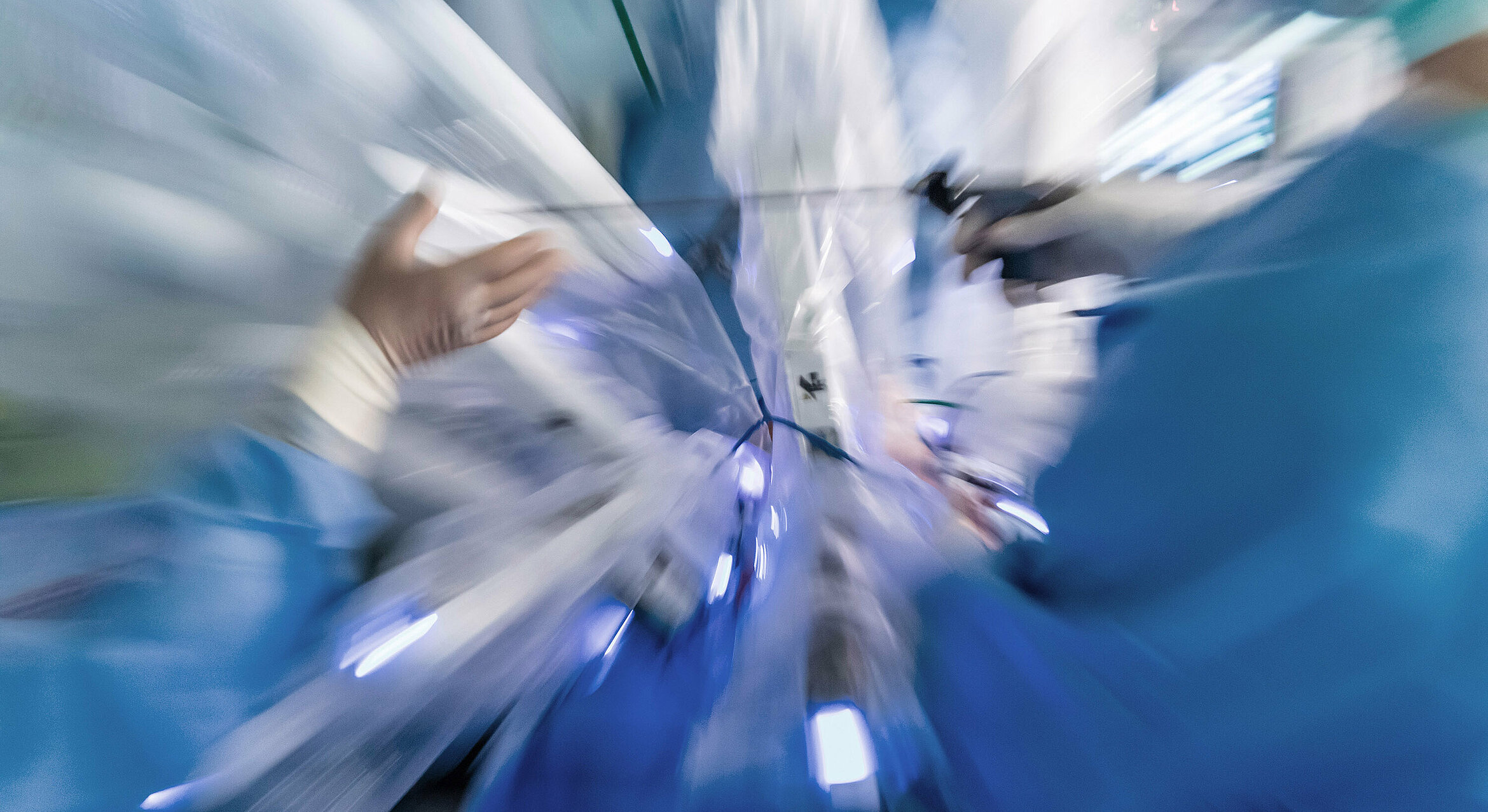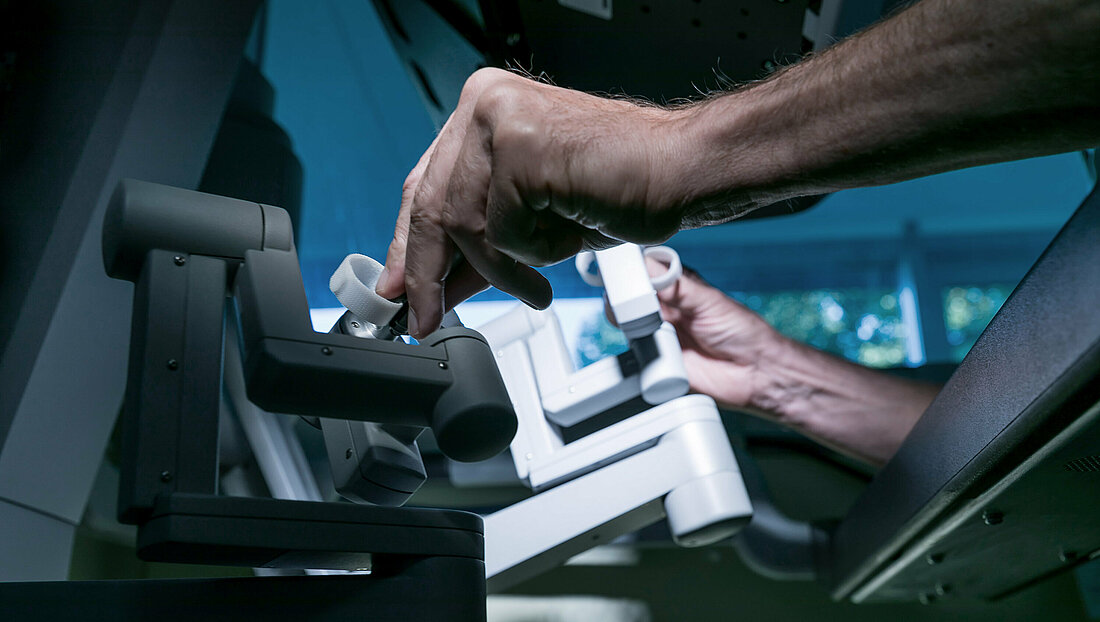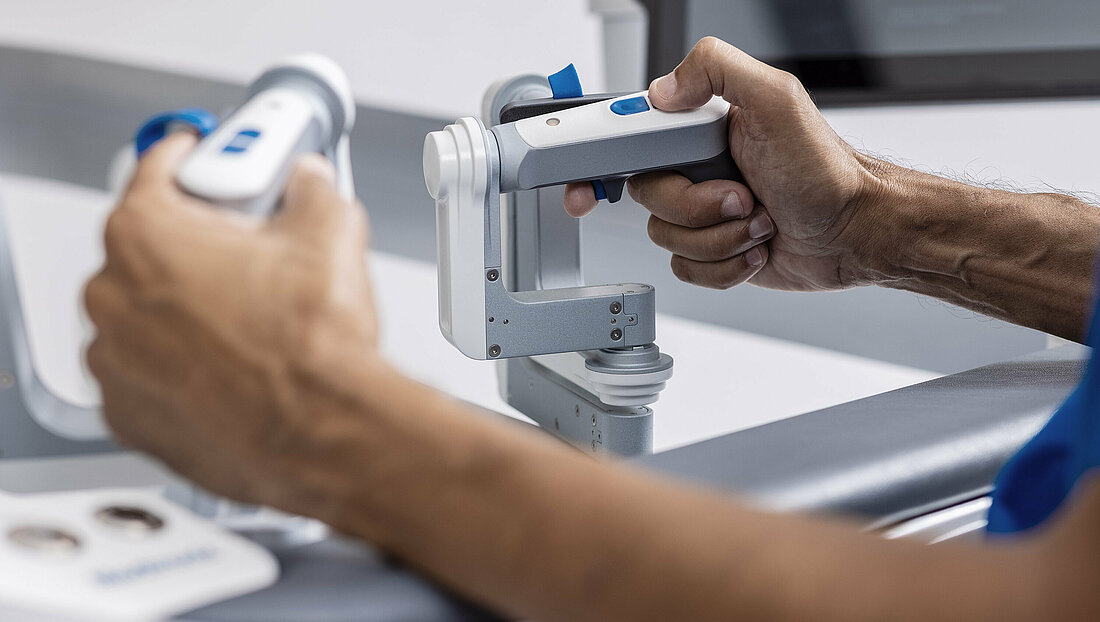Elements in a robotic-assisted surgical system
A robotic-assisted surgical system is composed of three main components: the control console, the video system and one or more instrument carts.
The control console
The surgeon sits at the control console in the operating room and looks into the stereoscopic viewing window integrated into the console. The surgeon’s left and right hands each grip a freely movable controller handle. These handles turn the movement of the surgeon’s fingers and hand joints into electronic control signals. These signals are transmitted to the instrument cart beside the patient and translate the movements of the surgeon’s hands into identical movements by the instruments in the surgical area.
The da Vinci® system relies on state-of-the-art telemanipulator technology. This refines the doctor’s hand movements and adapts them to the delicate structures inside the body. The surgeon works with a completely steady hand – to an extent that would not be possible in conventional surgery or even using conventional laparoscopic techniques.
The full HD video system
The da Vinci® system gives the surgeon an exceptionally good view throughout the procedure thanks to its full 3D HD view. The best comparison for the viewing window is that it is like using binoculars. The camera combines two scopes in a single shaft. A separate camera is available for each scope. The left and right images are transmitted and synchronised on two monitors and transmitted into the viewing window. Consolidating the left and right images creates a three-dimensional image with extraordinary depth. The cameras also offer 10x magnification, clearly visualising even very delicate structures. This gives the surgeon an excellent view of the procedure – a crucial requirement for precise microsurgery.
The patient cart
The cart is positioned directly beside the patient. It features three instrument arms and, in the centre, the camera arm. These arms use adapters to connect to the instruments and the camera. Trocars specific to the da Vinci® system are used to insert the instruments and camera into the patient. During the operation, this cart converts the movements made by the surgeon at the control console into movements by the instruments. The instruments have multiple articulations and seven degrees of freedom, precisely matching the mobility and agility of the surgeon’s hands and wrists. This presents a particular advantage when dissecting and reconstructing extremely delicate anatomical structures. The instruments move exactly as the surgeon intends.




